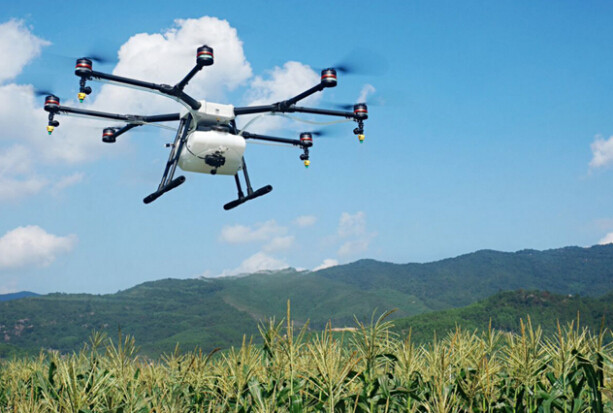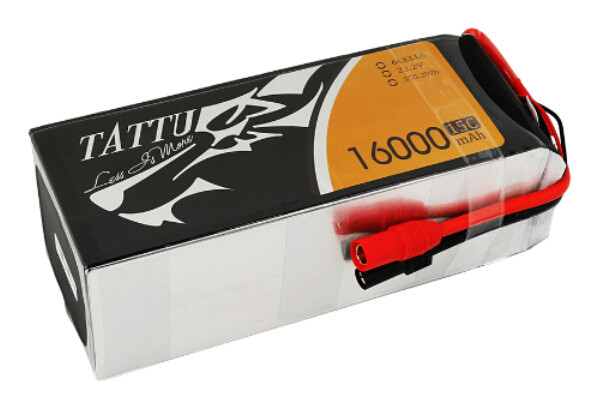Drone agriculture:Fixed Wing or Multi-Copter
Jul 3rd 2016
How to choose a drone agriculture? Fixed Wing or Multi-Copter? Let's do some simple comparisons fist.
 But Fixed wing drones are more expensive too, usually they cost $5,000 to $25,000 or more after being fitted with sensors.(compare with multicopter)
But Fixed wing drones are more expensive too, usually they cost $5,000 to $25,000 or more after being fitted with sensors.(compare with multicopter)
 Payloads on many multi-rotors are less than fixed wings, so most only carry one or two sensors. As a result, covering an entire field can take twice as long as with a fixed wing.
Multi-rotor drones are generally cheaper than fixed wings, starting at around $1,500-$3,500 for a professional-grade camera drone with software for agriculture image processing.
Payloads on many multi-rotors are less than fixed wings, so most only carry one or two sensors. As a result, covering an entire field can take twice as long as with a fixed wing.
Multi-rotor drones are generally cheaper than fixed wings, starting at around $1,500-$3,500 for a professional-grade camera drone with software for agriculture image processing.
 Spec.
- Product Type: lipo battery pack
- Capacity: 16000mAh
- Voltage: 22.2V
- Max Continuous Discharge: 15C (240A)
- Max Burst Discharge: 30C(480A)
- Weight: 1985g
- Dimensions: 190*73*62 mm
- Balance Plug: JST-XHR
- Discharge Plug: XT150+AS150
- Charge Rate: 1-3C Recommended, 5C Max
Spec.
- Product Type: lipo battery pack
- Capacity: 16000mAh
- Voltage: 22.2V
- Max Continuous Discharge: 15C (240A)
- Max Burst Discharge: 30C(480A)
- Weight: 1985g
- Dimensions: 190*73*62 mm
- Balance Plug: JST-XHR
- Discharge Plug: XT150+AS150
- Charge Rate: 1-3C Recommended, 5C Max
Fixed Wing drone:Ag Eagle
Fixed wing drones like the AgEagle RAPID, and SenseFly eBee Ag are often preferred by farmers because they can spend more time in the air than a multi-rotor platforms like the DJI's Matrice 100.That said, they are best suited for large, open-field scanning.And also Fixed wing drones often carry more payload than a multi-rotor which means more sensors and so more information can be captured in a single flight. But Fixed wing drones are more expensive too, usually they cost $5,000 to $25,000 or more after being fitted with sensors.(compare with multicopter)
But Fixed wing drones are more expensive too, usually they cost $5,000 to $25,000 or more after being fitted with sensors.(compare with multicopter)
Pros
Endurance : fly as much as 10x longer and cover more geography in a single flight Payload capacity: can carry more weight Applications: larger selection of sensorsCons
Cost: usually more expensive Ease of Use: not as easy as a multirotor Size: requires more space for storage and transportMulti-Copter:DJI Agras MG-1:
Multi-rotor ag drones like DJI's Matrice 100 are better-suited to precision imaging of small/constrained areas and 3D scanning of fields and objects, due to their maneuverability. Flight times for quads and other multi-rotors are about 1/2 that of a fixed wing drone. Payloads on many multi-rotors are less than fixed wings, so most only carry one or two sensors. As a result, covering an entire field can take twice as long as with a fixed wing.
Multi-rotor drones are generally cheaper than fixed wings, starting at around $1,500-$3,500 for a professional-grade camera drone with software for agriculture image processing.
Payloads on many multi-rotors are less than fixed wings, so most only carry one or two sensors. As a result, covering an entire field can take twice as long as with a fixed wing.
Multi-rotor drones are generally cheaper than fixed wings, starting at around $1,500-$3,500 for a professional-grade camera drone with software for agriculture image processing.
The Best of Both Worlds
Rather than opting for one type of drone, some farmers and operators purchase less expensive versions of both. A fixed wing drone is used for large open spaces where long, unobstructed straight-line passes are possible; and, a small inexpensive multi-rotor is used for spot-checking trouble areas more closely, for quick scouting missions and for handling area a plane cannot fly over. Lots of farmers today start by buying a ready-to-fly quadcopter like DJI's new Phantom 4. After testing the ROI of drone surveying, they may upgrade to more expensive and less time-consuming solutions. Pros and Cons(Compare to fixed wing): There are many things that multi-rotor drones can do better, for example, when get into confined spaces,like cross a pedestrian path.they can hover over a specific area, what's more, they need little space to take off and land.Pros
Cost: Usually more cheaper. Applications: really good at aerial photography and hi resolution video. Easy to use. Can hover,more agile.Cons
Endurance: less flight time Payload capacity: usually less weight Customer service: little support if you are buying a consumer drone Occasional bugs, is "fly away" Battery is very important to drone agriculture .Here I'd also like to recommend a very popular lipo battery as below:TATTU 16000MAH LIPO 22.2V 15/30C 6S1P BATTERY PACK
 Spec.
- Product Type: lipo battery pack
- Capacity: 16000mAh
- Voltage: 22.2V
- Max Continuous Discharge: 15C (240A)
- Max Burst Discharge: 30C(480A)
- Weight: 1985g
- Dimensions: 190*73*62 mm
- Balance Plug: JST-XHR
- Discharge Plug: XT150+AS150
- Charge Rate: 1-3C Recommended, 5C Max
Spec.
- Product Type: lipo battery pack
- Capacity: 16000mAh
- Voltage: 22.2V
- Max Continuous Discharge: 15C (240A)
- Max Burst Discharge: 30C(480A)
- Weight: 1985g
- Dimensions: 190*73*62 mm
- Balance Plug: JST-XHR
- Discharge Plug: XT150+AS150
- Charge Rate: 1-3C Recommended, 5C Max
